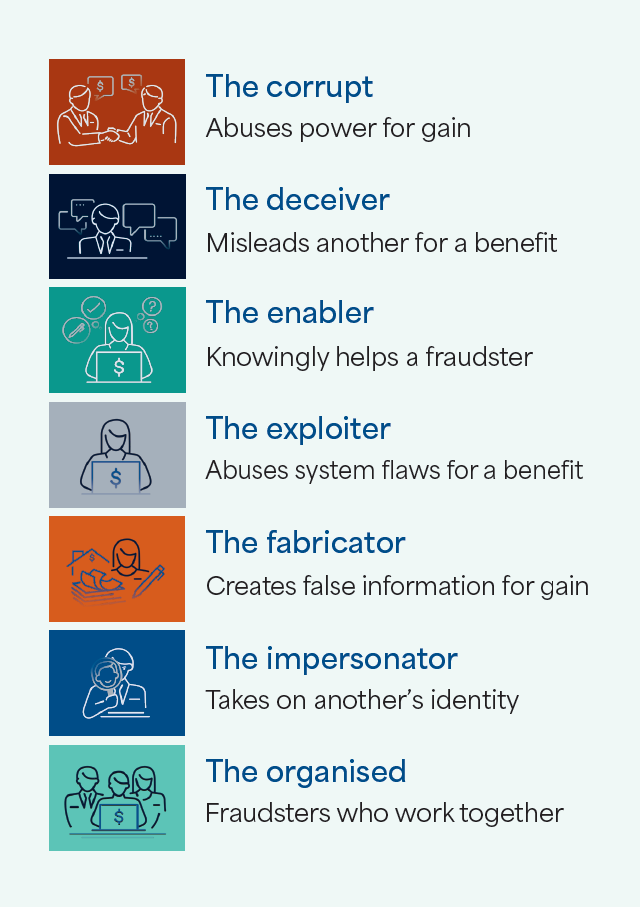Fraudster personas
There are seven common methods or personas that fraudsters adopt when committing financial crimes.
The Counter Fraud Centre at the Serious Fraud Office has identified seven fraudster personas, which can help you to think like a fraudster. A persona can be described as the character that is assumed by a fraudster, in line with the methods that they use to commit a fraudulent act. For example, they may deceive a public official, impersonate another individual or fabricate evidence.
Knowing the methods commonly used by fraudsters can be beneficial when planning counter fraud initiatives as it can help to provide additional insight into how an operation could be targeted. For example, it might be more straightforward to pinpoint how the fabricator persona could exploit a business process – such as submitting a fake invoice – than to ask employees to list all possible fraud risks for their business unit.
Fraudsters will often use a variety of methods from several different personas, so by understanding the range of methods they might use it can help to better recognise where they might target a government programme or function.

Guide to fraudster personas
Being able to recognise the fraudster personas is a useful tool for people responsible for developing, implementing and improving your organisation’s counter fraud strategy and approach.
This guide should be used by anyone in an organisation who is responsible for identifying, assessing and managing fraud risks. This may include risk practitioners, integrity advisors and assurance leads or people from finance teams. Understanding and identifying fraud should be a priority for everyone in an organisation, so this guide will also be useful for other key groups including managers and supervisors, policy and human resources teams.
-
Guide to fraudster personas (PDF 662 KB)
-
Factsheet on fraudster personas (PDF 158 KB)
Printable fraudster personas cards
Download and print a copy of our fraudster persona cards. These cards can be used a as a tool for learning, for table-top exercises, or around the office to raise awareness of different fraudster types.
Recommended print size is A6.
